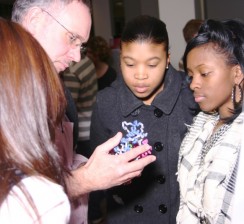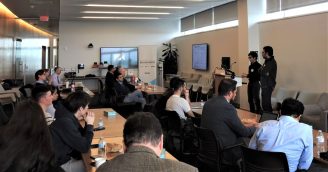25 Aug Mentor a SMART Team…and translate your science to the community
 The MSOE SMART Team program (Students Modeling a Research Topic) is currently recruiting translational researchers to mentor teams of high school students in a minimally invasive protein modeling project. The goal of the program is to expose students to the real world of science – as it is practiced in your research lab. As a bonus, you will receive a physical model of your protein.
The MSOE SMART Team program (Students Modeling a Research Topic) is currently recruiting translational researchers to mentor teams of high school students in a minimally invasive protein modeling project. The goal of the program is to expose students to the real world of science – as it is practiced in your research lab. As a bonus, you will receive a physical model of your protein.
SMART Teams literally change students’ lives – and you can be a part of that process as you work with a small team of high school students as they create a physical model of a protein that is central to your research.
Twenty high schools in the Milwaukee area will participate in the SMART Team program this year. Following an initial qualification phase, in which CBM staff train students in basic concepts of protein structure/function and in the use of protein modeling software, each team will be matched with a research mentor (you) on Nov. 5. Following this match, the team will visit your lab to learn about your research project, and meet the people in your lab (technicians, graduate students and post-docs) who are doing science. These students are powerfully motivated to read original research papers to understand your project – as they design and build a physical model of your protein, displaying specific features that will make the model useful in telling the story of your research project. In the final phase of the program, the teams create both a poster and a short 10 minute oral presentation of their modeling project. Following the wrap-up of the local SMART Team program in the spring of the year, a subset of these teams will travel with us to the annual Experimental Biology meeting where they present their modeling projects as part of the Undergraduate Research Poster competition.
 The SMART Team program is designed to be minimally invasive with respect to the time that it requires of you and your lab. Most projects involve four meetings between the students and the lab, spread out over a four month time period, followed by email exchanges to clarify specific questions that arise during the model design and presentation phases of the project. In the ten year history of the program, we have never had a researcher tell us that mentoring a SMART Team took too much time. Instead, many researchers tell us that they wish they could have had more opportunities to work with the teams during the project. To learn more about this program from the perspective of your colleagues, we encourage you to contact former SMART Team mentors, including: Deb Newman (Blood Research Institute), CeCe Hillard (Pharmacology, MCW), Martin St. Maurice (Biological Sciences, Marquette), Steve Forst (Biological Sciences, UWM) and Bill Berger (VA Medical Center).
The SMART Team program is designed to be minimally invasive with respect to the time that it requires of you and your lab. Most projects involve four meetings between the students and the lab, spread out over a four month time period, followed by email exchanges to clarify specific questions that arise during the model design and presentation phases of the project. In the ten year history of the program, we have never had a researcher tell us that mentoring a SMART Team took too much time. Instead, many researchers tell us that they wish they could have had more opportunities to work with the teams during the project. To learn more about this program from the perspective of your colleagues, we encourage you to contact former SMART Team mentors, including: Deb Newman (Blood Research Institute), CeCe Hillard (Pharmacology, MCW), Martin St. Maurice (Biological Sciences, Marquette), Steve Forst (Biological Sciences, UWM) and Bill Berger (VA Medical Center).
For more information about the SMART team program, and to see previous modeling projects, visit the SMART Team web site at http://cbm.msoe.edu/stupro/smart/index.html.










